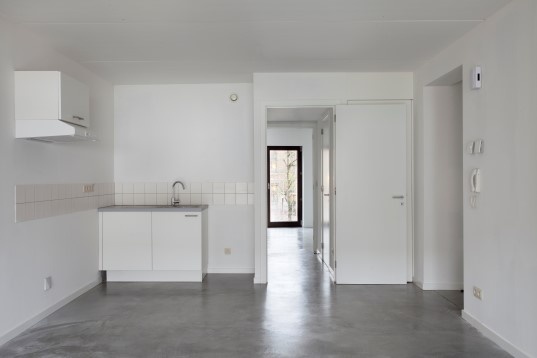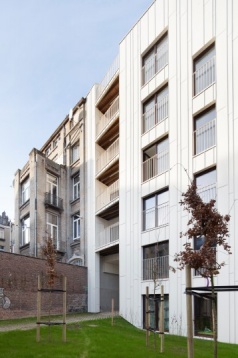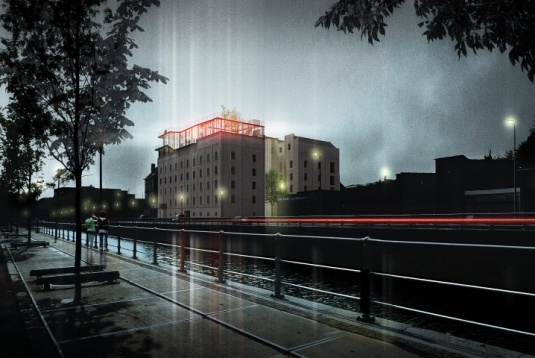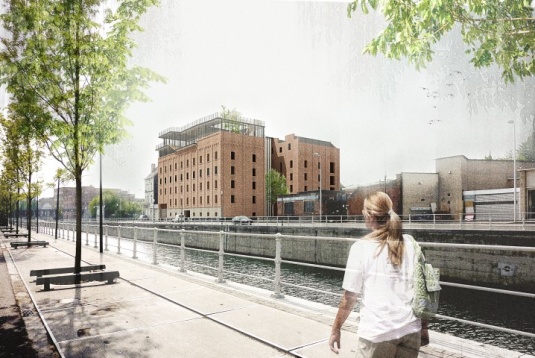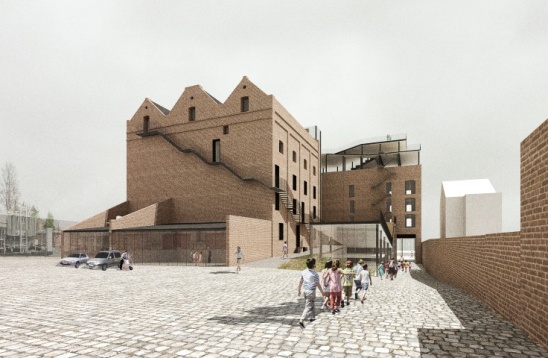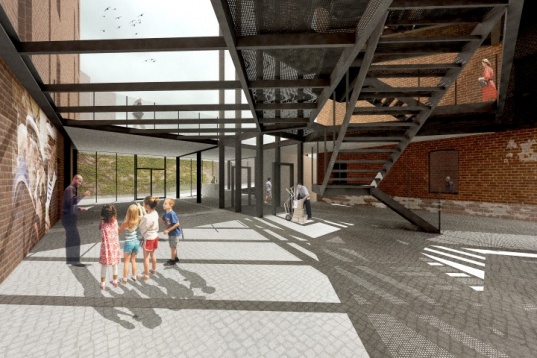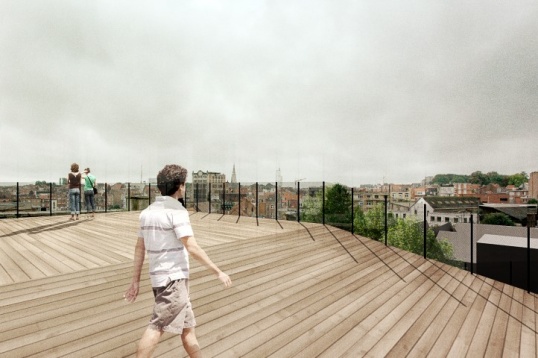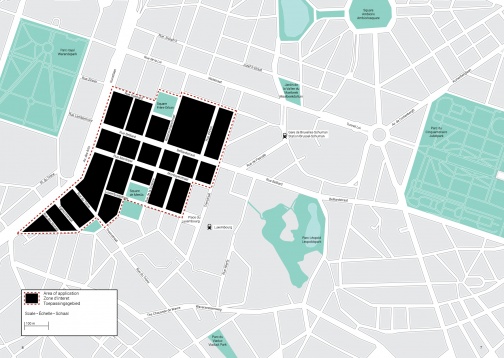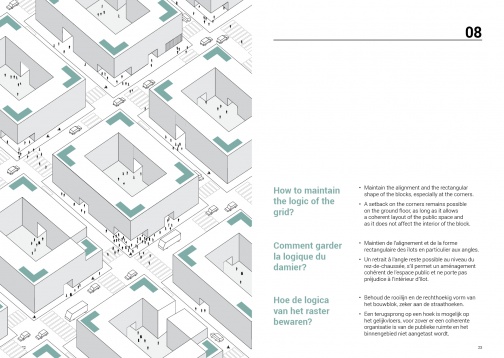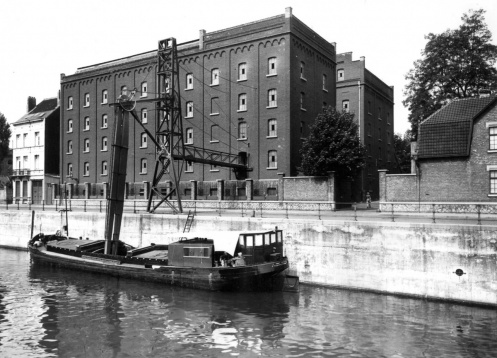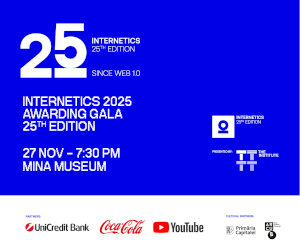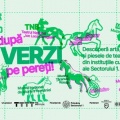HISTORY
SPECIFIC
With their multicultural and multidisciplinary team, they aspire to create a meaningful added value for society. Consequently, they frame their profession in the perspective of the increasing fragility of the world's ecosystem and see land-use as the main approach to sustainably improving environmental conditions. In this context, architecture - with the various disciplines it gathers around conceptual structures and systems, and with the design-based approach it supports - allows them to tackle the complexity of many man-made settlements, from the village core to the brownfield or the city centre. Their methodology is based on the critical iteration over scale - zooming in and out between the level of the circulation core, the neighbourhood and the planet. ROMANIAN DESIGN WEEK APPEARANCE
2016 // Moreau
New construction of 12 social passive apartments and 3 social low-energy dwellings, located in the dense urban tissue of Anderlecht, Brussels (BE). The real ecology of this project lies in high quality living in the city, high density combined with privacy, building in the inner area of an urban block, searching for the boundaries of the maximum allowed volume while preserving architectural harmony and looking for optimal sunlight and views for all residents. Social housing thus becomes an integral part of the city.
2016 // COOP
An innovative restoration approach has been used as a form of ecological recycling and cultural sustainability of industrial heritage. The project interacts on both local and supra-local levels and presents a low threshold towards the neighbourhood and the city. The two existing listed buildings are stripped and used as large flexible containers. In between these two all the ancillary functions are inserted: stairs, elevators, service space etc. The lobby is a “hall of fame”, a place where every citizen from the past, the present and the future can tell his or her story.
2015 // RUE Belliard Brochure - Vision for densification, mixed-use and living quality in the European Quarter in Brussels
BOGDAN & VAN BROECK is a research-oriented design practice strategically based in Brussels, actively involved in society and in the public debate, and ecologically inclined towards urban renewal and densification.
SPECIFIC
With their multicultural and multidisciplinary team, they aspire to create a meaningful added value for society. Consequently, they frame their profession in the perspective of the increasing fragility of the world's ecosystem and see land-use as the main approach to sustainably improving environmental conditions. In this context, architecture - with the various disciplines it gathers around conceptual structures and systems, and with the design-based approach it supports - allows them to tackle the complexity of many man-made settlements, from the village core to the brownfield or the city centre. Their methodology is based on the critical iteration over scale - zooming in and out between the level of the circulation core, the neighbourhood and the planet.
2016 // Moreau
New construction of 12 social passive apartments and 3 social low-energy dwellings, located in the dense urban tissue of Anderlecht, Brussels (BE). The real ecology of this project lies in high quality living in the city, high density combined with privacy, building in the inner area of an urban block, searching for the boundaries of the maximum allowed volume while preserving architectural harmony and looking for optimal sunlight and views for all residents. Social housing thus becomes an integral part of the city.
2016 // COOP
An innovative restoration approach has been used as a form of ecological recycling and cultural sustainability of industrial heritage. The project interacts on both local and supra-local levels and presents a low threshold towards the neighbourhood and the city. The two existing listed buildings are stripped and used as large flexible containers. In between these two all the ancillary functions are inserted: stairs, elevators, service space etc. The lobby is a “hall of fame”, a place where every citizen from the past, the present and the future can tell his or her story.
2015 // RUE Belliard Brochure - Vision for densification, mixed-use and living quality in the European Quarter in Brussels
Today Rue Belliard in Brussels functions primarily as an ‘exit-boulevard’ for car traffic. The surrounding European neighbourhood is a mono-functional area containing office buildings of which many are empty. The purpose of the study is the transformation on one hand of this thoroughfare into a new axis that offers more quality to pedestrians, residents and users, and on the other hand of the wider area into a pleasant and vibrant environment for living and working, supported by an appropriate mix of urban complementary functions. By means of research by design, we looked at: ways to densify the urban tissue and create enough critical mass to carry a rich offer of mixed functions; possibilities of transforming office buildings into housing; new target groups and potential residents; new urban and architectural typologies. The output consists of new forms of legislation and policy designed to combat the vacancy of the buildings and proactively stimulate new evolutions both bottom-up and top-down.

















